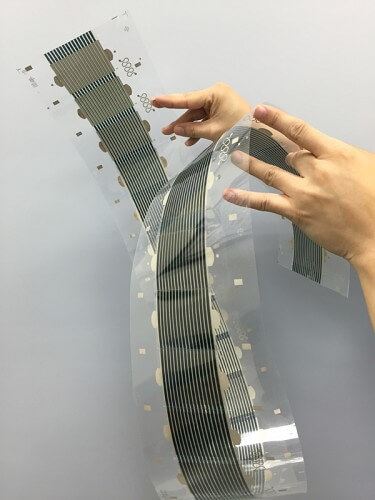Researchers from North Carolina and Hong Kong have found that temperature-controlled assembly of a new family of semiconducting polymers is the key to making efficient organic solar cells that can be mass-produced at low cost.

[Translation by Dr. Nachmani Moshe]
Researchers have discovered that temperature-controlled assembly of a new family of semiconducting polymers is the key to the production of efficient organic solar cells that can be mass-produced at low cost.
Researchers from North Carolina State University and the University of Hong Kong have found that temperature-controlled assembly of a new family of semiconducting polymers is the key to making efficient organic solar cells that can be mass-produced at low cost. Polymer solar cells are a finely controlled mixture of a donor polymer and an acceptor material of the fullerene type (fullerene, Wikipedia). The cell is created by adding a solvent to the polymer and fullerene mixture until a liquid mixture is obtained, and in the next step the liquid is sprayed onto a thin surface. When the solvent evaporates, the thin layer becomes solid. Today, the most efficient organic solar cells are made using only a single type of fullerenes.
The researchers previously examined the morphology of solar cells and found that the size of the polymer clusters within the polymer clusters - or the interrelationships between neighboring molecules within the different layers - are responsible for the obtained level of efficiency of the solar cell. In the article published by the researchers in the scientific journal Nature Communications, they show that the size of the clusters of the polymers within these devices depends to a considerable extent on the temperature. They also showed that it is possible to achieve a record level in terms of the efficiency of the solar cell equal to a value of 10.8%, compared to the previous record of 9.8%, while converting several types of fullerenes. In addition, this level of performance can be achieved within devices based on thin layers.
"Since we demonstrated how the temperature affects the level of aggregation and the morphology of these solar cells, the results allowed the chemists more freedom in their attempts to use different chemical compositions within the active layer," the researchers explain. The researchers demonstrated the level of efficiency in ten different mixtures in thin layers.
"We hope that our results will allow other researchers to conduct experiments with different mixtures of polymers and fullerenes, which will further increase the obtained efficiency of solar cells, will lead to the cheapening of their production and will lead to the development of alternative energy sources at a commercial level."

4 תגובות
Ronen
You are wrong. In the original article there is no repetition of the text, but only in the translation presented here.
The comment is correct.
Gentlemen, such a comment is not scientific; If there are complaints about the wording, contact directly the researchers who wrote the news, do not come to Dr. Nachmani with complaints. It is very natural that when there are such breakthroughs, researchers may get overly enthusiastic and not pay attention to the text and syntax.
flanked by Herzl,
You don't need to write the same sentence three times in every article
Researchers have discovered that temperature-controlled assembly of a new family of semiconducting polymers is the key to the production of efficient organic solar cells that can be mass-produced at low cost.
Researchers have discovered that temperature-controlled assembly of a new family of semiconducting polymers is the key to the production of efficient organic solar cells that can be mass-produced at low cost.
Researchers have discovered that temperature-controlled assembly of a new family of semiconducting polymers is the key to the production of efficient organic solar cells that can be mass-produced at low cost.